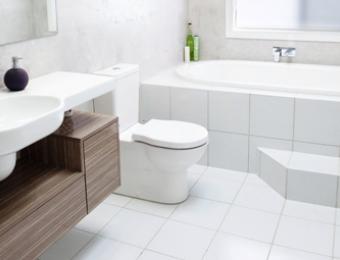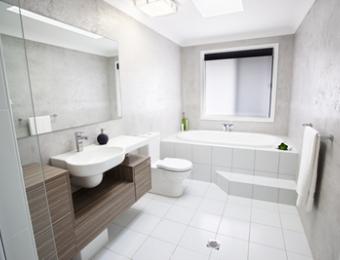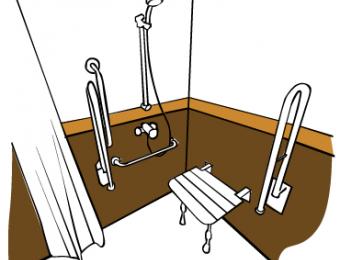Picking the right taps for your home may not be as easy as it sounds. Your kitchen, laundry, bath, shower and vanity taps will all have different requirements, and choosing sets that match as well as do the job they’re designed for effectively can sometimes be difficult. You may choose to buy the taps as a complete set which will save you time, but customising each tap to suit its purpose can often look better; what may work for the kitchen might look completely out of place in the shower, and so forth.

Different tap styles and types
Taps are made using a wide range of materials, including stainless steel, chrome, brass, nickel and gold. The choice here is mostly aesthetic - the material your taps are made of has very little effect on their efficiency and performance. Don’t be scared to consider metals other than chrome; brass taps and spouts, for example, are not terribly common and can make a surprising difference to the look and feel of your bathroom or kitchen. They can vary in texture too; a glossy look provides gleam and sparkle, while brushed or matte finishes will give a more modern feel. Some taps even feature LED lighting along the spout which changes colour depending on the temperature of the water!
What are mixer taps?
Most of the taps you'll find in modern homes in Australia are what's known as 'mixer taps'. With mixer taps, the hot and cold water emerge from a single spout, inside which the water is mixed. Older style taps used a separate spout for each tap. The disadvantage of separate spouts is that out of one tap you get icy cold water, and out of the other you get scalding hot water. If you need warm water when you're using separate taps, you need to put in a plug and mix the water yourself to achieve the right temperature. Mixer taps are almost always a more convenient and sensible option.
Another big plus for mixer taps is their ease of use. A single handle style mixer tap can be pushed on or off with the back of your hand or wrist, and is therefore fantastic for those with sore thumbs, fingers or wrists.
Tap styles
Taps themselves come in any number of styles, crosshead (i.e. shaped like a cross) and lever taps being the most common. Taps can be fitted to the base of the spout or mounted separately, depending on the application and positioning allocated. How this is accomplished leads to the many different varieties available. Some of these varieties include pedestal taps, double and single lever taps, wall mounted taps and many hundreds of other design variations.
In kitchens and over basins, a certain amount of clearance is often required so that the spout doesn't get in the way of the basin. Some kitchens use pull out taps, which are affixed to a flexible hose to allow more freedom and space in the basin.
How taps work
Different taps also regulate the water in different ways. Many of us are familiar with the compression type of tap – when the tap is screwed down it compresses a washer made of rubber or neoprene against a metal seat, which restricts the water flow. These washers will wear out over time, and need to be replaced.
Washerless taps
There are three main varieties of washerless taps available nowadays: ball, cartridge and ceramic disc taps. All three of these varieties of tap will help cut down on the amount of plumbing maintenance required.
- Ball taps work by pushing a hollow plastic or stainless steel ball over a rounded cover, which controls the temperature and flow of the water. These mechanisms are quite complex, and are prone to leaking more than other types of taps.
- Cartridge taps have a lever controlling a plastic or brass cartridge which moves up and down to restrict flow, and from left to right to change temperature.
- Ceramic disc taps have two ceramic plates which slide over each other to regulate temperature and flow and require the least maintenance out of all the types.
Water efficient taps
Where possible, you should opt for taps with the highest WELS rating you can manage, in order to save water and energy. The exception, of course, is your bath taps; these are only really used filling a bath, and for this purpose restricting the flow achieves nothing. In fact the faster your bath taps fill the bath, the more efficient they are, as you limit the amount of heat lost while the bath is filling.
How taps will be used
It's easy to get caught up in the many other details when choosing fittings, and to forget the more practical issues. When selecting your taps, think about how exactly they will be used. Little things like being able to relax in the bath without the risk of injury, ease of use with wet, dry and dirty hands, and the likelihood of accidentally bumping a tap into the 'ultra-cold' position (perhaps with your kidneys) in a shower recess are all important things to remember.





